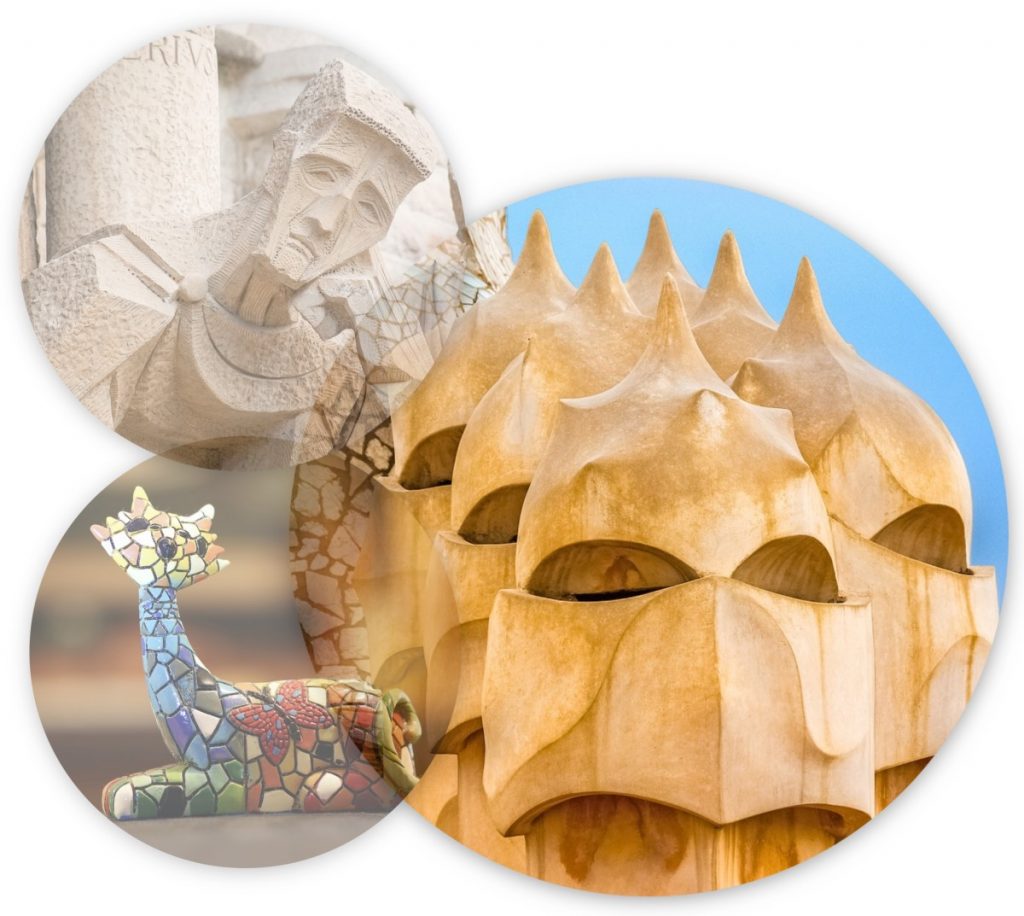Barcelona, Spain, offers TESOL teachers not only an exciting career opportunity but also an enriching cultural experience. Known for its vibrant art, cuisine, and unique architecture, Barcelona is home to the legendary Antoni Gaudí, whose imaginative style transformed the city’s landscape. Exploring Gaudí’s architecture is not only a visual treat but also a chance to bring history, art, and language learning to life for students.
Who Was Antoni Gaudí?
Antoni Gaudí, an architect of the Art Nouveau movement, is celebrated for his extraordinary designs that blend nature, color, and unique forms. His work is renowned for its surreal beauty, organic shapes, and intricate mosaics. For TESOL teachers, introducing students to Gaudí’s work allows them to explore descriptive language, discuss art and culture, and expand vocabulary in an engaging and memorable way.
Must-Visit Gaudí Sites for TESOL Teachers and Students
1. Parc Güell
Parc Güell is a magical park featuring Gaudí’s whimsical structures and mosaic-covered sculptures. Located on Carmel Hill, the park offers views of the city along with colorful mosaics, undulating forms, and playful designs. It’s the perfect place to bring students to discuss colors, shapes, and architectural terms, encouraging them to describe what they see and feel.
- Activity: Have students create a “visual vocabulary” list using terms they find relevant in the park. Words like mosaic, curve, pattern, and exotic make great additions to their descriptive vocabulary.
2. La Sagrada Familia
No trip to Barcelona is complete without visiting Gaudí’s unfinished masterpiece, La Sagrada Familia. This towering basilica, under construction for over a century, combines Gothic and Art Nouveau styles with symbolic sculptures and stunning stained-glass windows. For TESOL students, La Sagrada Familia serves as a fantastic resource for storytelling and discussing architecture’s impact on culture.
- Activity: Assign a writing exercise where students imagine they are architects working on the basilica. Ask them to write about what they would add or change, allowing them to practice descriptive language and creative thinking.
3. Casa Batlló
With its fantastical façade, Casa Batlló is another must-see Gaudí site. Often referred to as the “House of Bones” because of its skeletal design elements, Casa Batlló features fluid, organic forms inspired by the sea and nature. The bright colors and intricate designs make it a captivating place for discussions about Gaudí’s inspirations and students’ personal interpretations.
- Activity: Arrange a group discussion on how architecture reflects nature. Ask students to describe how Casa Batlló’s design mimics natural elements like waves or marine creatures, practicing vocabulary related to nature and art.
Integrating Gaudí’s Work into TESOL Lessons
Exploring Gaudí’s architecture opens doors to a variety of TESOL activities that foster vocabulary development, cultural awareness, and conversation skills.
1. Vocabulary Building
Use images of Gaudí’s work to introduce vocabulary related to shapes, colors, textures, and materials. Words like ornate, surreal, abstract, and vibrant are useful when describing Gaudí’s designs.
2. Descriptive Language Practice
Have students write or speak about their favorite Gaudí building, using descriptive language to express what they see and how it makes them feel. Encourage them to use a range of adjectives to describe shapes, colors, and artistic style.
3. Project-Based Learning
Ask students to create a “Barcelona Architecture Guide” featuring Gaudí’s buildings. They can write descriptions, include historical information, and even recommend local foods (like paella) that are popular nearby. This project can be digital or printed, depending on class resources.
Cultural Enrichment: Paella and Spanish Cuisine
Exploring Gaudí’s architecture can be complemented with sampling Spanish cuisine, which adds another layer of cultural immersion for TESOL students. Nearby Parc Güell, many restaurants serve traditional paella, a flavorful rice dish often cooked with seafood or meats. Sharing a meal of paella allows students to connect language learning with real-life experiences, discussing flavors, textures, and food-related vocabulary in an authentic setting.
- Activity: Organize a food-themed lesson where students describe their favorite dishes and the ingredients. Discussing food preferences helps students practice speaking in English while learning about Spanish culinary traditions.
Why Gaudí’s Work Matters in Language Learning
For TESOL teachers, incorporating Gaudí’s work into lessons is more than just exploring beautiful buildings—it’s an opportunity to connect art, history, and language in a memorable way. By engaging students with Gaudí’s vibrant architecture, teachers can enhance cultural appreciation, expand vocabulary, and encourage creative expression. Exploring Gaudí’s Barcelona gives students an enriching educational experience they’re sure to remember.
American TESOL offers a certification to teach English abroad so individuals can attend these exciting events in a sustainable and responsible way. Learn more about living and working in Barcelona.



